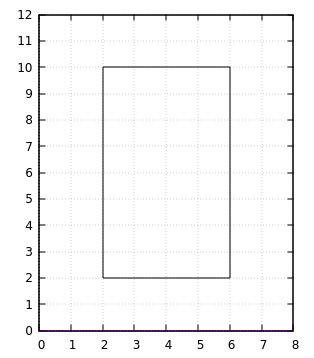Perimeters
Output: Standard Output (stdout)
Memory limit: 32 megabytes
Time limit: 1.0 seconds
Alison is in year 7 and she love Maths, in particular Measurement. She figures that to work out the perimeter of a rectangle she doesn't need the lengths of all sides to be given to her. If the rectangle is drawn on a plane (fancy word alert: Cartesian
plane) and the sides of the rectangle are parallel to the x and y axes, then she can figure the perimeter if she is given the bottom left vertex (unfancy word: corner
) coordinates and the top right vertex coordinates.
Input
The first line of input contains 2 integers, A and B, the x and y coordinates of the bottom left hand vertex.
The second line of input contains 2 integers, C and D, the x and y coordinates of the top right hand vertex.
Output
Print a single integer - the distance on the Cartesian plane that is the perimeter of the rectangle.
Subtasks
For all test cases, A < C and B < D. The following subtasks are available:
- Subtask 1 (50\%): A, B, C, D > 0
- Subtask 2 (50\%): -1000 \leq A, B, C, D \leq 1000
Sample Data Explanation

The diagram above corresponds to the sample data. The length of the horizontal line is the difference between the x values: 6 - 2 = 4. The length of the vertical line is the difference between the y values: 10 - 2 = 8. The perimeter is the sum of the four sides: 4 + 4 + 8 + 8 = 24
-
Sample Input 1
2 2 6 10
Sample Output 1
24 -
Sample Input 2
-150 -30 80 -10
Sample Output 2
500
